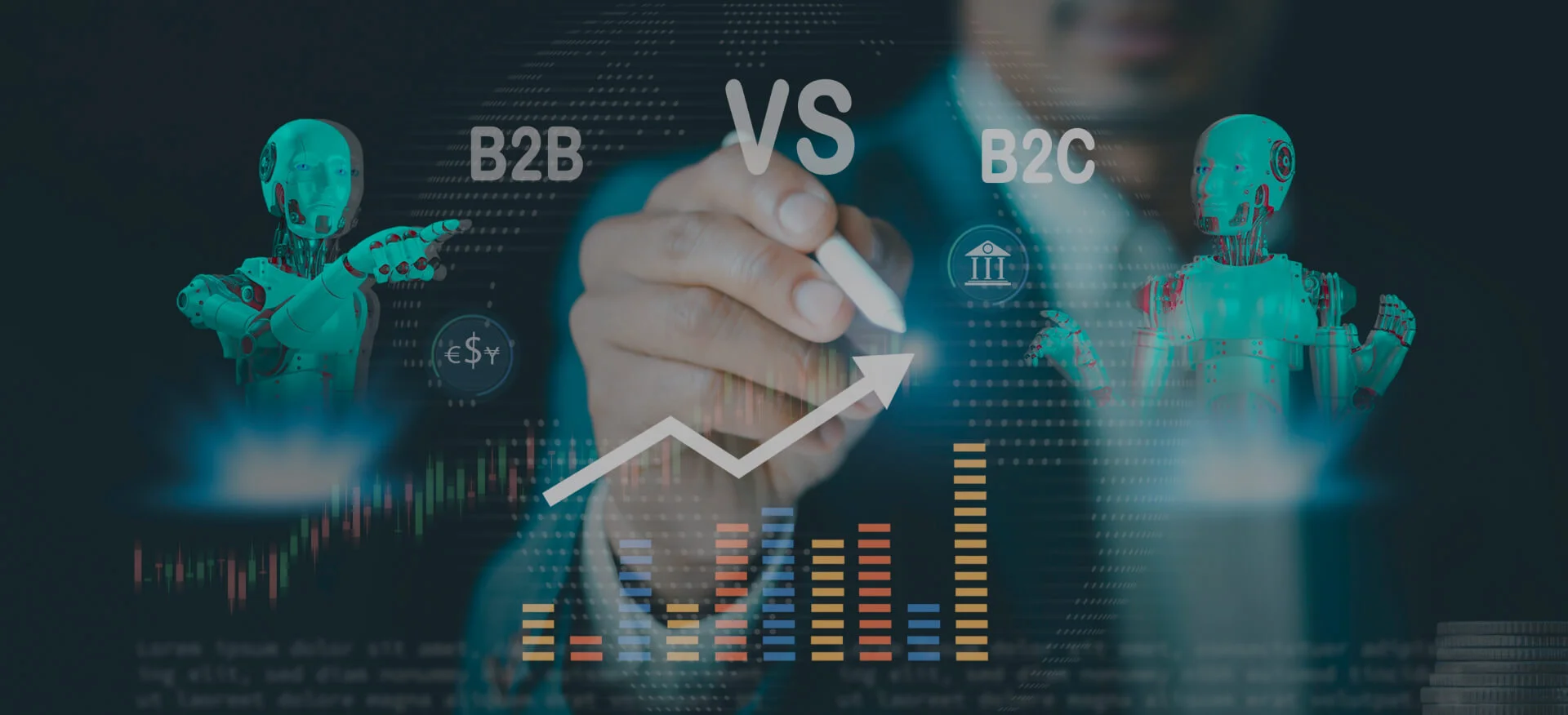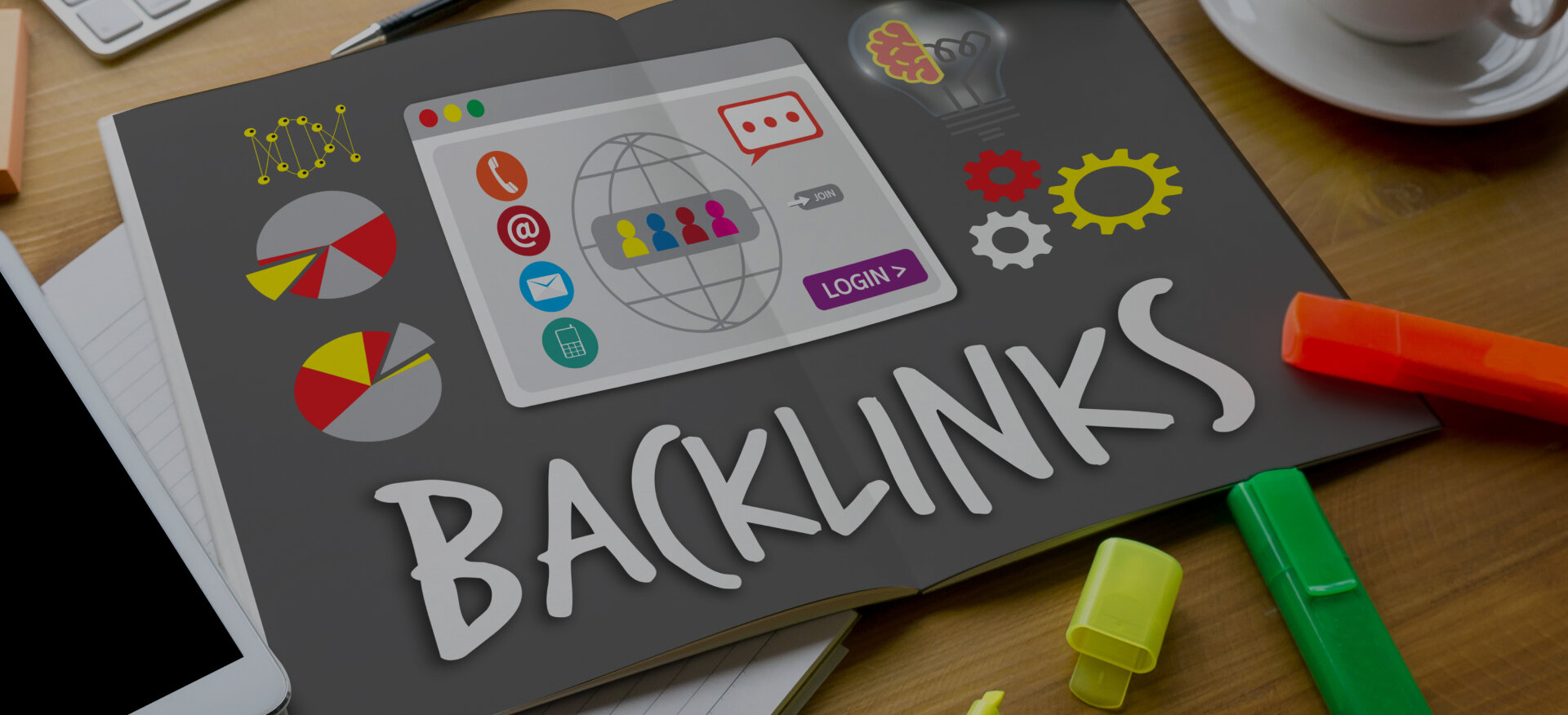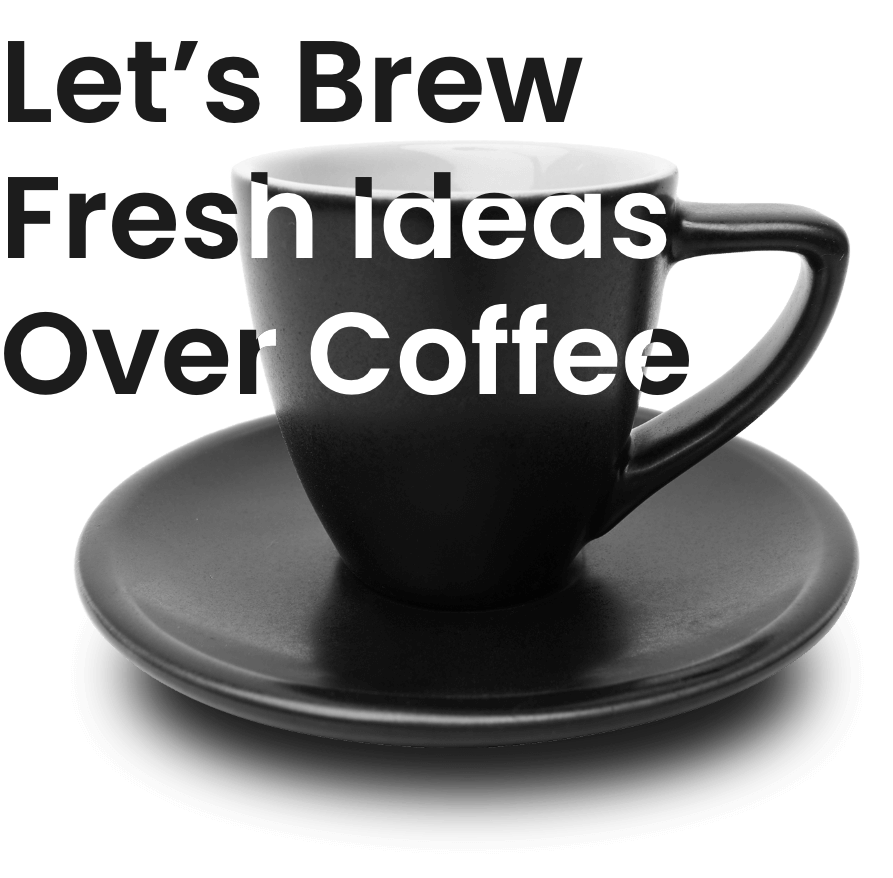Search Engine Optimization Understanding the difference between B2B (Business-to-Business) and B2C (Business-to-Consumer) models is very important today, especially with digital technology changing how businesses work. B2B means businesses selling to other businesses. For example, a logistics company working with a manufacturer. On the other hand, B2C means businesses selling directly to individual customers, like an online store selling products to shoppers.
As we move through 2026, the line between B2B and B2C is changing because of new technologies like artificial intelligence (AI), automation, and improved customer experiences. Both types of business models have grown and changed a lot. For instance, B2B marketing is no longer just about trade shows or cold calls. Now, it uses data-driven decisions, account-based marketing, and specific content designed for professional audiences.
Meanwhile, B2C marketing focuses on personal experiences, social media shopping, and connecting with customers through apps, influencers, and AI chatbots. Also, the customer journey has become more complex in both B2B and B2C. B2B buyers look for logical reasons, value, and long-term benefits. They often involve many decision-makers. B2C buyers usually want convenience, emotional connection, and quick satisfaction.
Therefore, businesses need to match their marketing, sales, and communication to the unique ways their audiences think and decide. If they don’t, they risk missing chances to grow. But if they adapt well, they can gain a strong advantage. This blog will explore the key differences between B2B vs B2C, their marketing strategies, and how businesses can succeed by understanding their customers better.
What is B2B?
B2B (Business-to-Business) refers to a business model where transactions are conducted between two businesses, rather than between a business and individual consumers. In a B2B model, one company sells products or services to another company to help them run their operations more efficiently or achieve specific business goals.
For example, a software company providing CRM (Customer Relationship Management) solutions to other companies, or a raw material supplier providing materials to manufacturers, are examples of B2B transactions. Best ecommerce seo services are essential for businesses in B2B that also have a direct-to-consumer component, as they help optimize digital storefronts and attract relevant traffic
Explore Our B2B Marketing Services
What is B2C?
Business-to-Consumer (B2C) refers to the model where businesses sell products or services directly to individual consumers for personal use. This approach encompasses various channels, including online platforms, physical retail stores, and mobile applications, aiming to provide seamless purchasing experiences. Industries like Travel and Tourism and Media and Entertainment often use Creative Services to engage consumers effectively.
Examples may include:
- Retail Clothing Store: Sells apparel and accessories directly to individual consumers through physical or online storefronts.
- Grocery Store: Offers food and household items for personal use to consumers via in-store shopping or delivery services.
- Consumer Electronics Retailer: Provides electronic devices and gadgets directly to consumers through retail outlets or ecommerce marketing platforms.
- Handmade Products E-commerce Store: Facilitates the sale of handcrafted goods directly to consumers through online marketplaces.
These examples highlight the diverse ways B2C companies engage directly with individual consumers across various industries.
Understanding the Core Differences Between B2B and B2C
Understanding the core differences between B2B (Business-to-Business) and B2C (Business-to-Consumer) is essential for crafting effective marketing strategies. These distinctions influence everything from communication styles to decision-making processes and pricing models.
![]()
1. Target Audience
B2B: B2B businesses target other companies, organizations, or institutions. The audience for B2B marketing is typically composed of decision-makers, such as CEOs, CFOs, IT managers, and procurement officers. The focus is on long-term relationships and solutions that can improve operational efficiency, productivity, or profitability for other businesses.
B2C: In B2C, businesses target individual consumers. B2C businesses typically market directly to people who are purchasing products or services for personal use, not for business operations. The primary focus here is on creating emotional connections with the consumer to drive sales and brand loyalty.
2. Sales Cycle
B2B: The sales cycle in B2B is often longer and more complex due to the involvement of multiple decision-makers, detailed research, and contract negotiations. The decision-making process involves strategic discussions and alignment across various departments, making the sales cycle last from weeks to months.
B2C: In contrast, the sales cycle in B2C is much shorter, often involving impulse decisions or quick purchase behaviors. Consumers typically make decisions based on emotional triggers or the desire for instant gratification. The buying process is often completed in a single interaction or within a few hours or days.
3. Communication Style
B2B: B2B marketing communication is often informative, factual, and professional. It focuses on the value proposition, return on investment (ROI), and how the product or service can address specific business challenges. It’s all about conveying the business benefits.
B2C: In B2C, the focus is on creating emotional appeal through engaging and personable content. B2C marketers often use storytelling, humor, and visual content to connect with consumers and evoke feelings that lead to a purchase. The messaging is often simple and direct, with an emphasis on convenience and brand loyalty.
4. Pricing Models
B2B: In B2B, pricing is often negotiable and tailored based on the specific needs and volume of the transaction. Pricing models like volume-based discounts, negotiated pricing, and contract pricing are common in B2B.
B2C: B2C pricing tends to be more transparent and fixed. While discounts, promotions, and sales events are common, the pricing is often set and advertised to attract individual consumers, allowing for quick decisions.
2 Key Differences Between the Target Audiences of B2B and B2C Businesses
B2B and B2C companies target very different audiences, which shapes their marketing strategies. Understanding these differences is essential for effectively reaching and engaging each group.
1. B2B Marketing: Emphasizing Efficiency and Value
B2B businesses focus on delivering innovative solutions that improve efficiency and profitability for other companies. Their products often include complex software like CRM systems and specialized services such as SharePoint Consulting or Digital Transformation Services, accounting, or legal consulting.
Success depends on clearly showing how these offerings solve specific business problems and add measurable value.
To reach their audience, B2B marketers use:
- Webinars: Educational sessions to demonstrate expertise.
- Press Releases: Announcements of new products or partnerships to build credibility.
- Targeted Advertising: Precise campaigns on platforms like LinkedIn, tailored by industry and role.
These methods help build trust and highlight value to business clients.
2. B2C Marketing: Fostering Emotional Connections
B2C companies appeal directly to individual consumers, focusing on emotional branding and simple, personal-use products across retail, entertainment, and fashion. Creating emotional bonds is key to standing out in a competitive market.
Effective B2C strategies include:
- Influencer Campaigns: Partnering with online personalities to promote products authentically.
- Promotions and Discounts: Limited-time offers to encourage purchases.
- Engaging Content: Visually appealing, relatable content to capture attention.
These tactics build brand loyalty and encourage repeat buying by connecting personally with consumers.
Explore Our Digital Marketing Services
B2B Marketing Strategies
B2B marketing strategies are designed to address the complexities of the B2B sales cycle, which often involves longer decision-making processes, multiple stakeholders, and a focus on ROI.
Effective strategies include Account Based Marketing (ABM), relationship-building, content marketing, content creation, and leveraging platforms like LinkedIn for lead generation.
1. Account-Based Marketing (ABM)
ABM is a targeted approach where marketing efforts are focused on specific high-value accounts rather than a broad audience. Implementing Account-Based Marketing involves creating personalized campaigns tailored to the unique needs and challenges of each account, aiming to build deeper relationships and increase conversion rates.
This strategy has been recognized for its effectiveness in driving engagement and revenue growth by aligning marketing and sales teams toward common goals.
2. Relationship-Building and Lead Nurturing
Given the extended B2B sales cycle, building and maintaining relationships is crucial. This involves consistent communication, understanding client needs, and providing value through various touchpoints.
Lead nurturing strategies, such as personalized email marketing campaigns and follow-ups, help move prospects through the sales funnel and build trust over time.
3. Webinars, Whitepapers, and In-Depth Content Marketing
Content marketing plays a pivotal role in B2B strategies by educating and informing potential clients. Webinars offer interactive platforms to showcase expertise and engage with audiences in real-time.
Whitepapers and eBooks provide in-depth insights into industry trends and solutions, serving as valuable resources for decision-makers.
Gated content, such as downloadable templates and industry reports, can also capture qualified leads by requiring contact information for access.
4. LinkedIn Lead Generation
LinkedIn is a powerful tool for B2B lead generation, offering access to a vast network of professionals and decision-makers.
Effective strategies include optimizing company profiles, sharing valuable content, and engaging with prospects through personalized messages. Both organic and paid approaches can be utilized to attract and convert leads. Syncing LinkedIn marketing strategies with CRM platforms streamlines lead management and follow-up, significantly improving B2B lead generation.
Implementing these B2B marketing strategies can significantly enhance lead generation, build lasting relationships, and drive business growth.
By focusing on targeted approaches, personalized communication, and valuable content, businesses can effectively navigate the complexities of the B2B sales cycle.
B2C Marketing Strategies
B2C (Business-to-Consumer) marketing strategies are designed to directly engage individual consumers, focusing on emotional appeal, convenience, and personalized experiences.
These strategies aim to build brand loyalty, encourage repeat purchases, and enhance customer satisfaction. While these strategies are critical for B2C success, a B2B SEO company can help businesses ensure their B2C efforts are discoverable and optimized for search engines.
1. Social Media Marketing
Social media platforms like Instagram, TikTok, and Facebook are pivotal in B2C marketing. They facilitate brand awareness, customer engagement, and direct sales through features like shoppable posts and live streams.
Brands leverage these platforms to showcase products, share user-generated content, and interact with customers in real-time, creating a community around their products.
2. Influencer Collaborations
Partnering with influencers allows brands to reach targeted audiences through trusted voices. Influencers, ranging from macro to micro levels, create authentic content that resonates with their followers, driving product awareness and sales.
For instance, beauty brands often collaborate with influencers to demonstrate product usage and share reviews, influencing purchasing decisions.
3. Discounts, Loyalty Programs, and Flash Sales
Offering discounts and loyalty programs incentivizes repeat business and attracts new customers. Flash sales create urgency, prompting immediate purchases.
Loyalty programs reward customers for their continued patronage, often through points systems or exclusive offers, fostering long-term relationships and enhancing customer retention.
4. Personalized and Emotional Content
Crafting personalized experiences and emotionally resonant content helps brands connect with consumers on a deeper level.
Personalization can include tailored recommendations, targeted emails, and customized shopping experiences.
As businesses explore these strategies, they may also wonder, What is B2B website design? and how it can enhance their digital presence in the B2C landscape.
By integrating these strategies, B2C companies can effectively engage their audience, drive sales, and cultivate lasting customer relationships using marketing and branding services that align with their target demographic and enhance their brand presence.
Key Takeaways: Winning Strategies for 2026
As the lines between B2B and B2C continue to blur, marketers must stay ahead of the curve by embracing new technologies and strategies that will help them engage their audience more effectively. Here are some key takeaways for marketers:
-
Personalization is Key: Whether you’re targeting businesses or individual consumers, the ability to personalize content, products, and services is critical. Leverage data analytics, AI, and automation to deliver tailored experiences.
-
Embrace Emerging Technologies: The future of marketing is heavily influenced by technologies like AI, AR/VR, and automation. Investing in these technologies will help you create innovative and immersive experiences for your customers.
-
Adopt Cross-Channel Strategies: In 2026, marketing success will depend on your ability to connect with your audience across multiple channels. Ensure your message is consistent and tailored for each platform.
-
Build Strong Relationships: Whether in B2B or B2C, building long-term relationships is paramount. Focus on creating emotional connections with B2C consumers and providing consistent, value-driven experiences to B2B clients.
Business To Business vs Business To Consumer: A Side-by-Side Comparison
| Aspect | B2B (Business-to-Business) | B2C (Business-to-Consumer) |
|---|---|---|
| Target Audience | Other businesses, organizations, or institutions | Individual consumers or end-users |
| Decision-Making Process | Involves multiple stakeholders; often a formal, consensus-driven process | Primarily individual decision-making; can be impulsive or emotional |
| Sales Cycle | Longer and more complex; may take weeks to months | Shorter and more straightforward; often completed in a single transaction |
| Purchase Volume | Typically larger transactions; bulk buying | Smaller, individual purchases |
| Pricing Strategy | Negotiated pricing; may include volume discounts or long-term contracts | Fixed pricing; occasional discounts or promotions |
| Customer Relationship | Long-term partnerships; emphasis on customer service and support | Short-term interactions; focus on customer satisfaction and experience |
| Marketing Focus | Value proposition, ROI, efficiency, and relationship building | Emotional appeal, brand loyalty, convenience, and personal benefits |
| Content Type | Whitepapers, case studies, webinars, technical documentation | Advertisements, social media content, product reviews, influencer endorsements |
| Sales Channels | Direct sales teams, industry events, trade shows, LinkedIn, B2B marketplaces | Online stores, retail outlets, e-commerce platforms, social media |
| Customer Support | Dedicated account managers, technical support teams, personalized service | Customer service centers, online chat support, FAQs, self-service portals |
B2B and B2C Sales Process
The sales processes in B2B (Business-to-Business) and B2C (Business-to-Consumer) models differ significantly in complexity and duration.
1. B2B Sales Process
B2B transactions typically involve a longer, multi-stage sales cycle. This process includes steps such as prospecting, lead qualification, needs assessment, proposal development, negotiation, and closing.
The extended duration is due to factors like multiple decision-makers, higher transaction values, and the need for customized solutions.
According to industry insights, B2B sales cycles can range from several weeks to months, depending on the product or service complexity
2. B2C Sales Process
In contrast, B2C sales are generally quicker and more straightforward. Consumers often make purchasing decisions based on immediate needs or emotional responses, leading to shorter sales cycles.
The process typically involves product discovery, consideration, and purchase, often completed within a single interaction or a short time frame. Food and Beverage and Real Estate agency use Web Design & Development services to create appealing digital storefronts that facilitate fast consumer decisions.
For businesses investing in digital storefronts and offering consumer-oriented products, affordable local SEO services can greatly enhance their visibility, ensuring that customers find them easily during their decision-making process.
B2B and B2C Pricing Models
The pricing models in B2B (Business-to-Business) and B2C (Business-to-Consumer) markets differ significantly, reflecting the distinct nature of their target audiences and sales processes.
1. B2B Pricing Models
In B2B transactions, pricing is often flexible and tailored to client needs. Common B2B pricing models include:
- Volume-Based Pricing: Discounts based on the quantity purchased to encourage bulk orders.
- Negotiated Pricing: Custom pricing agreements reflecting client requirements and buying power.
- Tiered Pricing: Different price levels depending on purchase volume or service tiers.
- Contract Pricing: Fixed prices agreed upon for a set period under long-term contracts.
- Cost-Plus Pricing: Price based on production cost plus a markup for profit.
- Dynamic Pricing: Prices are adjusted based on market demand, competition, or other factors.
These models help businesses build lasting partnerships and accommodate varied purchasing behaviors. Additionally, companies offering enterprise SEO solutions may tailor pricing strategies to reflect the specific services required, further enhancing the value proposition for clients seeking long-term growth.
2. B2C Pricing Models
B2C pricing typically focuses on clear, straightforward prices to appeal directly to individual consumers. Common B2C pricing models include:
- Fixed Pricing: Standard prices set for products, clearly advertised to consumers.
- Discount Pricing: Temporary price reductions, sales, or promotional offers to drive purchases.
- Penetration Pricing: Setting low initial prices to attract customers and gain market share.
- Psychological Pricing: Pricing products just below round numbers (e.g., $9.99) to make them seem cheaper.
- Dynamic Pricing: Adjusting prices based on demand, season, or competitor pricing in real time.
- Bundle Pricing: Offering multiple products together at a reduced combined price.
- Subscription Pricing: Charging consumers a recurring fee for continuous access to a product or service.
These pricing strategies are commonly employed by Digital Marketing services and Web Design & Development services to attract and retain individual customers. These models aim to make buying easy, encourage quick decisions, and foster customer loyalty.
Future Trends in B2B vs B2C (2026 and Beyond)
As we move into 2026 and beyond, both B2B and B2C marketing strategies are evolving to incorporate advanced technologies and personalized experiences. Here's an overview of the emerging trends in each sector:
1. B2B Marketing Trends
- AI-Driven Personalization: Artificial Intelligence is increasingly utilized to tailor marketing efforts to individual business needs. By analyzing data, AI enables the creation of personalized content and experiences, enhancing engagement and conversion rates.
- Automation: Marketing automation tools are streamlining processes, allowing for more efficient campaign management. These tools help in lead nurturing, customer segmentation, and performance tracking, leading to improved ROI.
- Hyper-Targeted Content: Content marketing is becoming more focused, with businesses creating highly specific content that addresses the unique challenges and interests of their target audience. This approach increases relevance and effectiveness.
Companies leveraging company branding services can ensure that their hyper-targeted content aligns perfectly with their brand identity, making it more impactful. The role of global creative services in B2B marketing is also becoming crucial as businesses look for innovative solutions to engage with clients on a personal level using creative, tailored campaigns.
2. B2C Marketing Trends
- Augmented Reality (AR) and Virtual Reality (VR) Shopping Experiences: AR and VR technologies are transforming the shopping experience by allowing consumers to visualize products in their environment before making a purchase. This immersive experience enhances customer satisfaction and reduces return rates.
- Shoppable Videos: Integrating shopping features into video content enables consumers to purchase products directly through the videos they watch. This seamless shopping experience caters to the growing demand for convenience.
- Voice Search Optimization: With the increasing use of voice-activated devices, optimizing content for voice search is becoming crucial. Businesses are adapting their international seo company strategies to accommodate conversational queries, improving visibility and accessibility.
Convergence of B2B and B2C Strategies
The lines between B2B and B2C marketing are blurring, leading to the adoption of shared strategies:
- Humanized Storytelling: Both sectors are focusing on authentic narratives that connect with audiences on an emotional level, moving beyond traditional product-centric messaging.
- Data-Driven Personalization: Utilizing data analytics to create personalized experiences is a common trend, with both B2B and B2C marketers aiming to deliver relevant content and offers to their audiences. In this evolving landscape, corporate branding services play a key role in ensuring that both B2B and B2C brands maintain a consistent, compelling story across all channels.
These converging strategies highlight the importance of understanding and adapting to the evolving marketing landscape to effectively engage with target audiences.
FAQs: B2B vs B2C
What is the difference between B2B and B2C?
The difference between B2B and B2C lies in the target audience. B2B (Business-to-Business) involves transactions between businesses, while B2C (Business-to-Consumer) focuses on selling directly to individual consumers. B2B typically deals with more complex products or services, while B2C focuses on convenience and emotional connections.
What does B2B and B2C mean in marketing?
B2B and B2C represent two different business models. B2B marketing is aimed at other businesses and focuses on building long-term relationships and value propositions. In contrast, B2C marketing targets individual consumers, often using emotional appeal and simpler purchasing decisions.
How is B2C vs B2B marketing different?
B2C vs B2B marketing differs mainly in audience targeting and strategies. B2B marketing is more focused on providing logical, value-driven content and long sales cycles, while B2C marketing uses emotional appeal and shorter, more direct sales processes.
What are the key differences in the B2B vs B2C sales process?
The B2B vs B2C sales process varies greatly. B2B typically has a longer, multi-stage process involving multiple decision-makers, while B2C sales are quicker, often based on impulse or emotional decisions, and usually involve one consumer per transaction.
What is B2B and B2C in terms of business models?
What is B2B and B2C? B2B refers to businesses selling products or services to other businesses, while B2C refers to businesses selling directly to consumers. Both models have distinct strategies but are evolving with new technologies and personalized approaches.
How do you decide whether to go B2B or B2C for your business?
Choosing between B2B or B2C depends on your target market. If your product or service is for other businesses, B2B is the way to go. If your focus is on individual consumers, B2C marketing strategies, which are more emotional and direct, will be more suitable.
Conclusion
In summary, B2B (Business-to-Business) and B2C (Business-to-Consumer) marketing strategies differ significantly due to their distinct target audiences and purchasing behaviors.
B2B Marketing focuses on building long-term relationships with other businesses. The buying process is typically longer, involving multiple decision-makers and a focus on logic and ROI. Strategies include account-based marketing, personalized content, and relationship-building through direct communication.
B2C Marketing, on the other hand, targets individual consumers. Purchasing decisions are often quicker and influenced by emotions, convenience, and brand appeal.
Common strategies involve social media marketing, influencer collaborations, discounts, and personalized content to engage consumers and drive sales.
As we approach 2026, understanding these differences is crucial for success. B2B companies are increasingly adopting digital transformation, focusing on AI-driven personalization and automation to enhance customer experiences.
B2C companies are embracing technologies like AR/VR shopping experiences and voice search optimization to meet evolving consumer expectations.
The convergence of B2B vs B2C strategies is evident, with both sectors emphasizing humanized storytelling and data-driven personalization.
This shift reflects a broader trend towards customer-centric approaches, where understanding and addressing the unique needs of each audience is paramount.
Thus, by embracing the evolving landscape and focusing on personalized, customer-centric approaches, businesses can effectively engage their audiences and drive growth.








